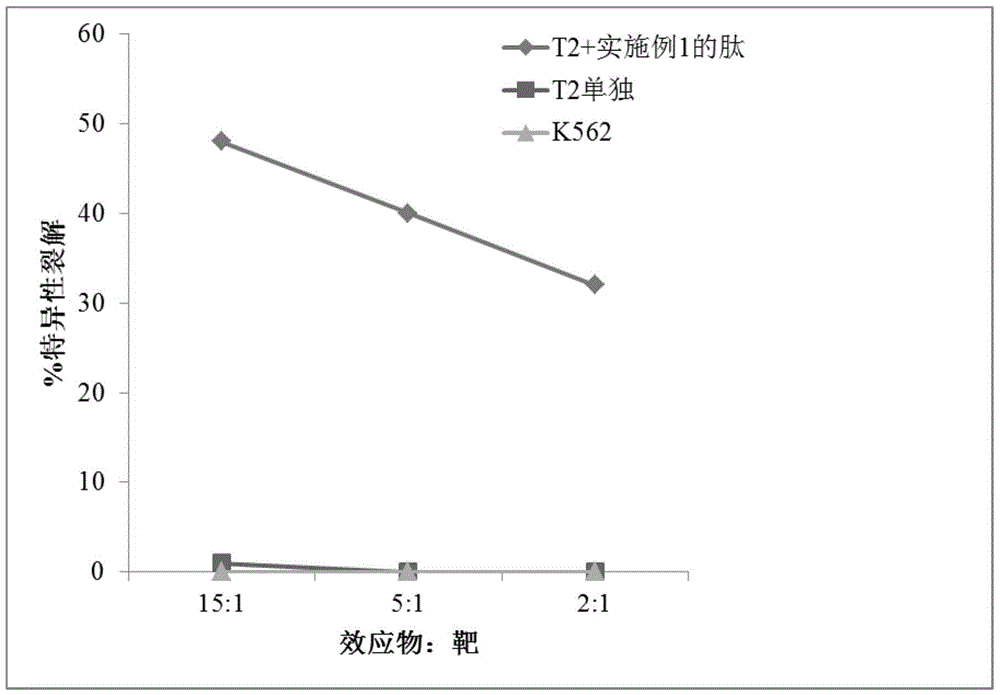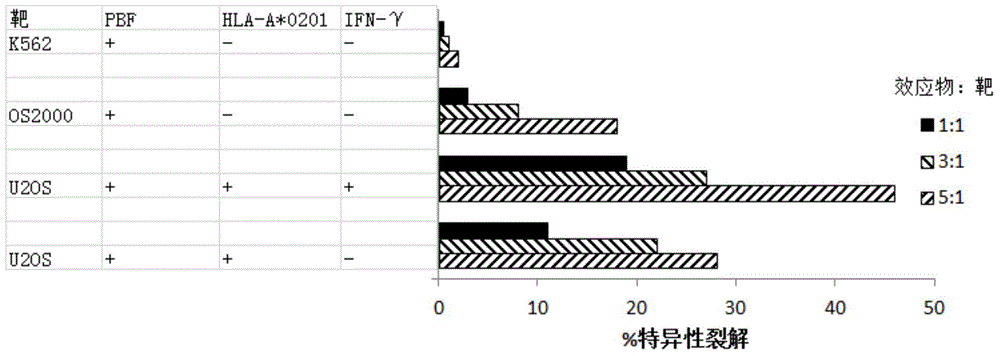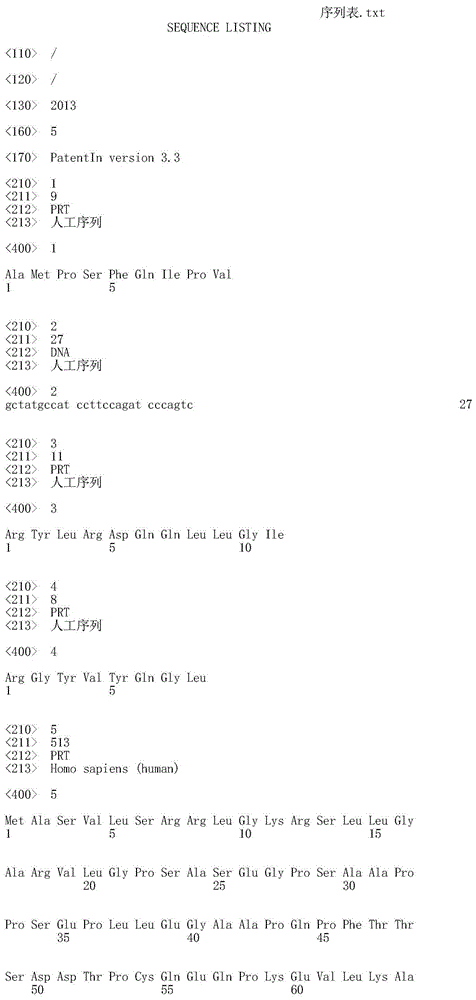Tumor antigen peptide and uses thereof in diagnosis and medicines
A technology of tumor antigen peptides and antigens, which is applied in the direction of anti-tumor drugs, anti-animal/human immunoglobulins, drug combinations, etc., and can solve problems such as insufficient activity and inability to fully satisfy the field of cancer immunity
- Summary
- Abstract
- Description
- Claims
- Application Information
AI Technical Summary
Problems solved by technology
Method used
Image
Examples
Embodiment 1
[0173] Synthesis of Example 1 Peptide and Measurement of Its Binding Affinity to HLA-A0201
[0174] The peptide shown as SEQ ID NO: 1 was synthesized by the Fmoc method. The binding affinity of the peptides to HLA-A0201 was measured by the HLA class I stability assay (J Immunol, 2004, 173:1436, which is incorporated herein by reference). In this assay, a peptide derived from influenza matrix protein (RYLRDQQLLGI, SEQ ID NO:3) was used as a positive control and the murine H-2Kb binding peptide VSV8 (RGYVYQGL, SEQ ID NO:4) was used as a negative control. Assays were performed in triplicate. By staining with FITC-labeled anti-HLA-A2 monoclonal antibody BB7.2 (purchased from ATCC) and measuring the fluorescent signal by flow cytometry, and according to the following equation: %MFI increase=[(MFI has a given peptide- MFI without peptide) / (MFI without peptide)] x 100 was used to determine the percentage increase in mean fluorescence intensity (% MFI increase), and to detect the bi...
Embodiment 2
[0175] Example 2 Frequency Analysis of Antigen Peptide-Specific CTL
[0176] Lymphocytes from 5 PBF-positive patients with osteosarcoma were subjected to mixed lymphocyte peptide culture (Limited Dilution / Mixed Lymphocyte Peptide Culture; LD / MLPC) under limiting dilution conditions to induce peptide-specific CTL (CancerSci., 2008, 99:368-375, which is incorporated herein by reference).
[0177] For 2 patients: Patient No. 1 and No. 2, 50 ml of peripheral blood was collected to isolate peripheral blood mononuclear cells (PBMC). PBMCs were incubated in AIM-V medium (Invitrogen) containing 1% human serum and supplemented with 50 μg / ml of the peptide shown in SEQ ID NO: 1 at room temperature for 60 minutes. PBMCs stimulated with peptides at 2 x 10 5 cells / 200 μl / well were plated in U-bottom 96-well microtiter plates and cultured in AIM-V medium containing 10% human serum, 20 U / ml IL-2 and 10 ng / ml IL-7. Seven days after the start of culture, half of the medium in each well was ...
Embodiment 3
[0183] Example 3 Establishment of Antigen Peptide-Specific CTL
[0184] For culturing T cells, B cell lines obtained by transforming B cells from healthy individuals positive for HLA-A0201 with Epstein-Barr virus: NS-EBV-B cells, and cells derived from HLA-A0201 by transforming with Epstein-Barr virus Negative B cell line derived from B cells of patients with osteosarcoma: LCL-S2000 cells (J Orthop Sci., 2003, 8:554-559, which is incorporated herein by reference). The T cells in the wells of patient No. 4 who were positive for tetramers found in Example 2 were plated in a 96-well microplate at a single cell / well. Add 2×10 per well 4 NS-EBV-B cells and 8×10 irradiated NS-EBV-B cells stimulated with the peptide shown in SEQ ID NO:1 4 One irradiated allogeneic PBMC were cultured in 200 μl AIM-V medium containing 10% human serum, 200 U / ml IL-2 and 10 ng / ml IL-7. 14 and 21 days after the start of culture, with 1 × 10 4 NS-EBV-B cells irradiated and stimulated with the peptide s...
PUM
 Login to View More
Login to View More Abstract
Description
Claims
Application Information
 Login to View More
Login to View More - R&D
- Intellectual Property
- Life Sciences
- Materials
- Tech Scout
- Unparalleled Data Quality
- Higher Quality Content
- 60% Fewer Hallucinations
Browse by: Latest US Patents, China's latest patents, Technical Efficacy Thesaurus, Application Domain, Technology Topic, Popular Technical Reports.
© 2025 PatSnap. All rights reserved.Legal|Privacy policy|Modern Slavery Act Transparency Statement|Sitemap|About US| Contact US: help@patsnap.com



